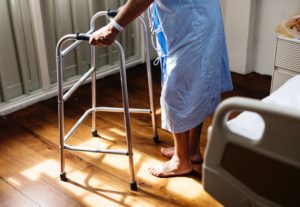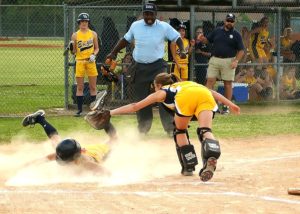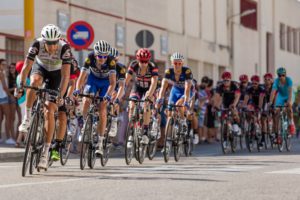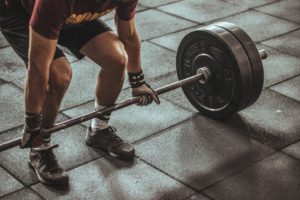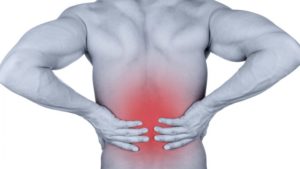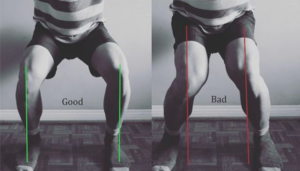Rehabilitation
Rehabilitation is a journey. One that is, often times, not comfortable nor quick enough for those working their way along. When picking a companion for such an arduous journey you want someone who knows and has traveled the landscape. Additionally, the more complete and extensive the corrective interventions are, the better the outcomes tend to be…
What someone might need for rehabilitation will depend on the individual, their injury, their goals, and what they need to get back to in life. Because this is different for each person, rehabilitation should be individualized and patient-centered. This requires time and energy to be put in by all parties for an effective and efficient rehabilitative protocol.
Rehabilitation
Rehabilitation is a journey. One that is, often times, not comfortable nor quick enough for those working their way along. When picking a companion for such an arduous journey you want someone who knows and has traveled the landscape. Additionally, the more complete and extensive the corrective interventions are, the better the outcomes tend to be…
What someone might need for rehabilitation will depend on the individual, their injury, their goals, and what they need to get back to in life. Because this is different for each person, rehabilitation should be individualized and patient-centered. This requires time and energy to be put in by all parties for an effective and efficient rehabilitative protocol.
Pain Management
Experience shows that pain is a noxious sensory AND emotional experience. It is important to appreciate the influence of sociological and psychological factors on pain, as well as the concept that pain and tissue damage are not always correlated as closely as we think. When we are actively experiencing, remembering, or even imagining future pain we can have a negative cascade of thoughts and emotions that pulls our attention towards the pain and magnifies the pain experience.
If you were to imagine a scenario, how much discomfort would you feel if you stubbed your toe while running out of a burning house? In contrast, how much pain are you in when you stub your toe on the way to the bathroom at night? We have the ability to modulate our painful experiences which can provide some level of control over a situation that, all too often, can feel so out of control.
Pain Management
Experience shows that pain is a noxious sensory AND emotional experience. It is important to appreciate the influence of sociological and psychological factors on pain, as well as the concept that pain and tissue damage are not always correlated as closely as we think. When we are actively experiencing, remembering, or even imagining future pain we can have a negative cascade of thoughts and emotions that pulls our attention towards the pain and magnifies the pain experience.
If you were to imagine a scenario, how much discomfort would you feel if you stubbed your toe while running out of a burning house? In contrast, how much pain are you in when you stub your toe on the way to the bathroom at night? We have the ability to modulate our painful experiences which can provide some level of control over a situation that, all too often, can feel so out of control.
Performance
If performance is all about improvement, then why not try to improve biomechanics, alignment, dynamic balance, and how optimally you move? It is important to consider the difference between movement training and exercise for fitness or sport training. Biomechanics matter when it comes to performance and, along the same lines, optimal form and biomechanical balance will give the best performance with the least amount of risk.
If you want to be one of the highest performing individuals in the world, you are going to have to flirt with capacity. You are working to push the capacity of the system for speed, agility, strength, and endurance. As an athlete, there is training specific to your sport. Additionally, it may be important to consider the components that will help you to excel from a deeper anatomic and physiologic standpoint.
For example, consider the use of intermittent hypoxic training for performance. Authors Sanchez and Borrani (2018) found their intermittent hypoxic training protocol to induce additional effects on aerobic performance in highly trained runners. This was accomplished without compromising any anaerobic capacity.
Something else to consider is that a significant component of performance is the rest and recovery aspect. Consider some of the most efficient ways of switching your body from the stressful (fight or flight) sympathetic input of training to the parasympathetic (rest and relax) with effective breathing techniques and neurophysiologic input.
Do things that allow you to get the maximum out of the effort you’re putting in to train and perform at your highest levels…
Performance
If performance is all about improvement, then why not try to improve biomechanics, alignment, dynamic balance, and how optimally you move? It is important to consider the difference between movement training and exercise for fitness or sport training. Biomechanics matter when it comes to performance and, along the same lines, optimal form and biomechanical balance will give the best performance with the least amount of risk.
If you want to be one of the highest performing individuals in the world, you are going to have to flirt with capacity. You are working to push the capacity of the system for speed, agility, strength, and endurance. As an athlete, there is training specific to your sport. Additionally, it may be important to consider the components that will help you to excel from a deeper anatomic and physiologic standpoint.
For example, consider the use of intermittent hypoxic training for performance. Authors Sanchez and Borrani (2018) found their intermittent hypoxic training protocol to induce additional effects on aerobic performance in highly trained runners. This was accomplished without compromising any anaerobic capacity.
Something else to consider is that a significant component of performance is the rest and recovery aspect. Consider some of the most efficient ways of switching your body from the stressful (fight or flight) sympathetic input of training to the parasympathetic (rest and relax) with effective breathing techniques and neurophysiologic input.
Do things that allow you to get the maximum out of the effort you’re putting in to train and perform at your highest levels…
Injury Prevention
Injury will occur with stress exceeds capacity. Ironically, it is often times as we are building capacity, competing, or performing that we cross this barrier and find ourselves with an injury. As incredibly important as it is to train strength and conditioning, also consider training movement and movement control. Consider building capacity in different positions and different ways.
Corrective exercise can be used to address any possible issues prior to things starting to break down. With optimal motion and contribution from all body tissues, the risk and rate of injury drops. This is not a one-size-fits all protocol.
I have yet to see a standard to being human. The demands of life define our personal function and, to a large degree, we train to increase our capacity in an effort to be bulletproof against what life would typically throw at us.
The parts of the equation are the movement patterns, stressors, loads, and capacity. With a good evaluation of what life requires of you we can build appropriate movement patterns, alter stressors, modify loads, and more efficiently build capacity.
Injury Prevention
Injury will occur with stress exceeds capacity. Ironically, it is often times as we are building capacity, competing, or performing that we cross this barrier and find ourselves with an injury. As incredibly important as it is to train strength and conditioning, also consider training movement and movement control. Consider building capacity in different positions and different ways.
Corrective exercise can be used to address any possible issues prior to things starting to break down. With optimal motion and contribution from all body tissues, the risk and rate of injury drops. This is not a one-size-fits all protocol.
I have yet to see a standard to being human. The demands of life define our personal function and, to a large degree, we train to increase our capacity in an effort to be bulletproof against what life would typically throw at us.
The parts of the equation are the movement patterns, stressors, loads, and capacity. With a good evaluation of what life requires of you we can build appropriate movement patterns, alter stressors, modify loads, and more efficiently build capacity.




